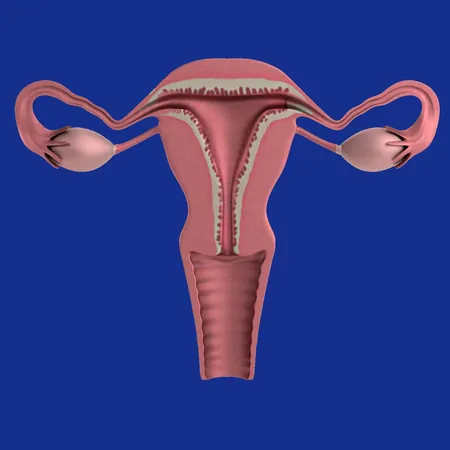
Revolutionary Research Links Parasitic Infection to Increased Cervical Cancer Risk
2025-04-12
Author: Wei
A Shocking Connection Unveiled
A groundbreaking study has uncovered a startling connection between the parasitic infection Schistosoma haematobium (S. haematobium)—which afflicts millions worldwide—and the activation of cancer-related genes in the cervical lining. Newly presented at the ESCMID Global 2025 conference, this research reveals the unsettling implications of this often-overlooked parasite on cervical cancer risk at the molecular level.
Schistosomiasis: A Hidden Threat
Schistosomiasis is a widespread parasitic disease, particularly common in areas with limited access to clean water and sanitation. Over 110 million people suffer from S. haematobium, as it releases eggs that invade the urinary and reproductive tracts. While its link to bladder cancer is recognized, its impact on cervical cancer has remained largely unaddressed.
Insightful Findings from Tanzania
Researchers analyzed cervical tissue samples from 39 Tanzanian women—20 with S. haematobium infection and 19 without. After treatment with praziquantel, samples were taken at baseline and again four to twelve months later. Groundbreaking RNA sequencing and gene expression analyses identified cancer-related pathways activated by the infection.
Gene Expression: A Cause for Concern
Notably, the study found significant differences in gene expression: nine genes were altered between infected and uninfected women, 23 genes showed changes in those who cleared the infection post-treatment, and 29 genes differed between post-treatment individuals and those never infected.
Among the most concerning genes linked to cancer were:
- **BLK proto-oncogene**: A tyrosine kinase that can lead to tumor formation when dysregulated.
- **Long intergenic non-protein coding RNA 2084**: This gene acts as a prognostic marker in various cancers, affecting tumor progression.
- **Trichohyalin**: Known to be upregulated in certain cancers, it's involved in keratin complex formation.
- **TCL1 family AKT coactivator A**: Promotes survival and proliferation of cells, linked to lymphomas.
Post-Treatment Implications
Alarmingly, cancer-related pathways were found to be more active post-treatment, particularly those associated with inflammation, tissue remodeling, and the disruption of protective barriers in the cervix. These changes lead to enhanced blood vessel formation, activation of tumor processes, and reduced apoptosis, the body's natural mechanism for eliminating abnormal cells.
Dr. Anna Maria Mertelsmann, the lead author of the study, elaborated, "The findings indicate that infections like these could jumpstart molecular changes that heighten cancer susceptibility, especially post-treatment." She emphasized the concerning downregulation of genes that uphold cervical tissue integrity, noting that this could pave the way for HPV infection—a significant cervical cancer risk factor.
Future Directions and Recommendations
"Women treated with praziquantel exhibited more genetic changes linked to cancer compared to those still infected," Dr. Mertelsmann warned. This raises critical questions about the long-term effects of treatment, stressing the urgent need for careful post-treatment monitoring.
This pivotal study opens a new chapter in understanding S. haematobium's role in cervical cancer, prompting a larger follow-up study involving 180 women over the next year. Future research will investigate whether past schistosomiasis increases the risk of cervical cancer due to persistent HPV infections.
Emphasizing the importance of awareness surrounding Female Genital Schistosomiasis (FGS), Dr. Mertelsmann called for vigilant monitoring of women diagnosed with S. haematobium for early signs of cervical abnormalities.
Furthermore, she suggested exploring additional treatments—like anti-inflammatory or immune-modulating therapies—to mitigate the adverse effects seen after standard treatment. Vaccination against HPV could also be a game-changer in reducing cervical cancer risk among women affected by schistosomiasis.





 Brasil (PT)
Brasil (PT)
 Canada (EN)
Canada (EN)
 Chile (ES)
Chile (ES)
 Česko (CS)
Česko (CS)
 대한민국 (KO)
대한민국 (KO)
 España (ES)
España (ES)
 France (FR)
France (FR)
 Hong Kong (EN)
Hong Kong (EN)
 Italia (IT)
Italia (IT)
 日本 (JA)
日本 (JA)
 Magyarország (HU)
Magyarország (HU)
 Norge (NO)
Norge (NO)
 Polska (PL)
Polska (PL)
 Schweiz (DE)
Schweiz (DE)
 Singapore (EN)
Singapore (EN)
 Sverige (SV)
Sverige (SV)
 Suomi (FI)
Suomi (FI)
 Türkiye (TR)
Türkiye (TR)
 الإمارات العربية المتحدة (AR)
الإمارات العربية المتحدة (AR)